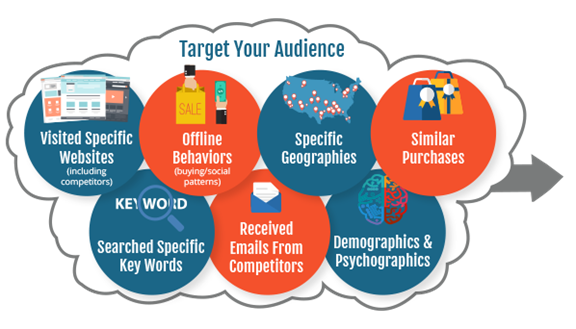Most bloggers and business writers have read all the tips, posts and books suggesting how to create a company blog. After all, the blog helps boost search engine optimization, which is a must for business longevity. Perhaps the business has even seen an increase in new visits to the site, yet for whatever reason, the blog isn’t converting these visitors into customers. What’s causing these problems and what’s rendering the blog less than reliable in terms of building the company profile? Here are several key pointers for identifying what’s hurting a blog’s conversion rate.
Publishing Frequency
Having a blog is one thing. Having a regularly published, updated blog is something totally different. In fact, most bloggers don’t really produce all that much in way of content. According to Orbit Media (2017), 22.7 percent of bloggers publish a new post several times per month. This isn’t even weekly and yet it’s the largest percentage of bloggers. 21.9 percent publish on a weekly basis, while 18 percent publish two to six posts per week. 15.6 percent of bloggers publish at random times with no real schedule or timing.
(Source)
With those numbers in mind, 66.7 percent of bloggers who report releasing content at least once a day said they saw a drastic increase in the performance of the blog. However, only 31.5 percent of bloggers who posted weekly said they saw a desirable increase in traffic. So if a blog isn’t converting at the rate the company would like, it’s necessary to take a step back and consider the publishing timeframe.
Posting content once per day will bring about the greatest results as it creates more backlinks on Google while boosting search engine optimization. Blogging offers a more or less free marketing opportunity, so the more a company such as your own takes advantage of it, the greater the return.
Is it Easy to Scan?
When someone visits a blog they want to scan over the post, obtain the general idea of the content, and then decide whether or not to read it. They may also pick and choose portions of the post to read. However, if the post isn’t designed to be easily scanned by a reader, it will not have the same kind of traction. It’s important to look at a blog as an entirely different entity than a research paper or a book.
As QuickSprout indicates, just 16 percent of blog visitors will read an entire blog post. 79 percent of visitors will scan over the content. This is why making a blog post easy to scan is crucial for the vast majority of readers. The 16 percent of visitors who read every word do not care the size of the paragraphs, while the other 79 percent do.
With traditional text, every paragraph represents a new idea or topic. A blog doesn’t follow these same formatting requirements. With a blog, it’s about meeting the needs of a reader and not a high school English professor. Individual topics on the same subject should be broken down into smaller blocks of text. Paragraphs should be no longer than three or four sentences, as anything longer just looks like a giant jumble of text.
There are a handful of ways to break up the text. One is with section headers. Section headers are a must as it not only improves scannability but also indicates to the reader what a section will focus on. The next way to break up text is to add visuals. NeoMam Studios reports a reader only takes in around 28 percent of the words on a single blog post, so informing the visitor of the subject for each section helps them pinpoint the most helpful portions of the text to read.
Share Posts on Social Media
A good amount of time and effort goes into creating a blog post. Despite this, most businesses and writers don’t put the necessary energy to promote the blog. Writing Internet posts doesn’t instantly mean others will find it. Even though Google and other search engines have reduced the wait time for how long it takes a new post to appear in a search, it doesn’t guarantee anyone will actually find it. Relying completely on visitors coming to the site organically through an Internet search will result in a reduction in visitors. In order to increase traffic not only through searches but also through other means, it’s important to share the blog post on social media.
When a company has an established social media footprint, it makes it easier to connect with subscribers and customers on a regular basis. These followers may also share a quality post or publication, should they find the post engaging, entertaining or educational.
(Source)
There are a number of different social accounts a business needs to make sure and share their post too. Facebook and Twitter are two of the most obvious. However, Google+ is a must as well. Google likes it when websites take advantage of other services offered by Google, including the Google+ search engine. Even if using this social platform is only used on account of boosting search engine optimization, it’s well worth the time it takes to set up and maintain the account.
LinkedIn stands as a different kind of social platform, as it connects with other professionals. Blog posts are easily shared here and provide another method for interacting with customers while providing them with a means of accessing (and sharing) a blog post.
Are You Using Pictures?
The age-old saying of “A picture is worth a thousand words” really does stand true. According to NeoMam Studios, people who receive instructions through both text and imagery instead of just imagery do a 323 percent better job following the instructions. Visuals also help people remember what it is they read (there’s a reason children’s books are mostly visually based and not all text). People tend to remember 80 percent of what they both see and do. This number drops down to just 20 percent of what they read.
(Source)
Most people are visual learners. This means they need to see something done in order to carry it out themselves. There are those who read the text and instantly understand, yet as the NeoMam Studios post points out, 65 percent of people are visual learners. Using only text and skipping out on pictorial demonstrations caters to just 35 percent of those reading the post.
Using pictures will help a blog not only prove a point but increase sales as well. According to the NeoMam Studios report, when an associate at the Wharton School of Business presented a purely verbal argument, only 50 percent of the audience felt persuaded by the presentation. On the other hand, a second associate used both verbal and visuals together for the presentation. This together resulted in 67 percent of the audience feeling persuaded.
Know the Target Audience
Blogging offers limitless opportunity. It allows the writer to focus on whatever he or she may want. While that might work in a personal blog, it doesn’t work with a professional blog.
Companies have a target audience. In order to best attract visitors and convert these readers into customers, it’s necessary to write content dedicated specifically to the target audience. If a company focuses on selling drywall, writing a post on the best Italian wines may prove entertaining for the writer and even the readers, but the readers who come to the site will not likely turn around and invest in drywall products. A blog isn’t just about bringing in traffic. It’s about bringing in the right traffic. It’s better to bring in one target audience reader who will more than likely make a purchase than 50 visitors who have no interest in what the company does or the products it sells.

(Source)
It’s important for any blog writer to keep a list of ideas for the given topic. This is one of the issues why blogs fail, stop or begin focusing on other topics. So keeping track and noting down possible topic ideas is extremely important. Checking competitive websites for blogs and scouring the Internet for subjects can help increase the number of viable post opportunities.
Picking random topics with no connection to the target audience will not bring in the desired kind of traffic or those who are likely to convert.
Check the Call to Action
Some blog posts are there simply to inform a reader. These posts do not require a call to action as no reader action is warranted. However, for the vast majority of blog posts, the author wants the reader to carry out a specific action. Whether they want the reader to sign up for an email newsletter, check out a product or follow the company on social media, when the author wants an action performed by the reader, they need to clearly indicate this.
When visitors to a blog do not follow the call to action, it may be due to an unclear call to action. If a reader doesn’t understand the call to action, finds it confusing or there are multiple calls to actions, each can (and often will) lead to readers not following through with the desired course of action.
(Source)
There are a number of different ways to provide a straight to the point, obvious and easy to follow the call to action. First, a blog should include one call to action per post. The beauty of blogging is there’s no limit to the number of blog posts a business can create (and as mentioned earlier, creating more posts results in improved results). Due to this, to keep instructions easy to follow, every post should include a single call to action.
The call to action doesn’t need to simply be a block of text at the bottom of the page. After all, with such a small percentage of visitors actually reading the entire page, there are no guarantee visitors will actually see the call to action. That’s why making it impossible to miss is important.
Offering a side-window pop-up that asks the visitor to “Click Here” or “Sign Up Now” is impossible to miss and informs the visitor of the desired action. It is important to inform the visitor of what will happen should they follow the CTA (receive a free e-book or download new templates).
Using a visual at the bottom of a page that stands out from the rest of the text while including the CTA within the visual is another way to ensure the visitor identifies and sees the CTA. If the current blog isn’t making the CTAs easy to view, this likely serves as a major reason as to why the conversion rates sit at a lower than the desired rate.
Not Mobile Friendly
The vast majority of those who take in news posts and blogs now do so from a mobile device. In fact, according to Fortune (2018), 85 percent of individuals within the United States now read news and blogs over their mobile device (which also includes tablets). This mobile device usage has remained a trend since the iPhone first hit markets back in 2007, as every year has seen an increase in mobile usage over the previous year.
In total, there are five billion mobile users around the world. This means it is possible for a blog to reach nearly every one of these users. Not all will fall into the target audience, but it does show the importance of making sure a blog (and the company website in general) is mobile friendly.
(Source)
In addition to making the blog friendly for the mobile user, a mobile version of the website helps with search engine optimization. Google rates mobile-friendly websites higher than traditional sites when mobile searches are executed. With the sheer number of people now using their mobile device for reading news and blogs, ranking higher on mobile searches will help improve traffic numbers. As long as the posts are designated for the target audience and the other points of concern are addressed, the increase in mobile should help boost conversion rates as well.
In Conclusion
If a blog is not performing as well as it should (or as well as the blog host believes it should), it’s likely due to a few different reasons. Whether the blog post is not mobile friendly, isn’t providing a clear call to action or isn’t easy to scan, there are a number of indicators as to why a blog isn’t bringing in the desired conversion rate and also what can be done to correct the issues. By following through with these pointers, it’s possible to not only identify what’s hurting a blog but implement changes in order to boost the blog’s overall performance and conversion rate.







